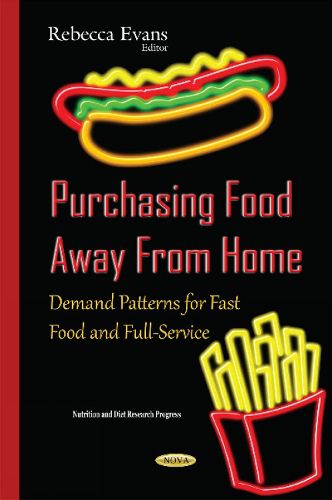Readings Newsletter
Become a Readings Member to make your shopping experience even easier.
Sign in or sign up for free!
You’re not far away from qualifying for FREE standard shipping within Australia
You’ve qualified for FREE standard shipping within Australia
The cart is loading…






Food away from home (FAFH) is an important part of a typical American’s diet and continues to increase as a share of the food budget. Rising consumption of a particular kind of FAFHfast foodhas been blamed for American’s expanding waistlines and poor diet quality. The study examined in this book uses data from the 2003-11 American Time Use Survey to examine the effects of time-use behaviors, prices, sociodemographic characteristics, labor force participation, and prices on fast-food purchasing patterns in the United States before and after the Great Recession. Because fast food accounts for a large share of U.S. food expenditures and calorie consumption, a better understanding of the motivation behind trends in fast-food purchasing behaviors may help inform policies designed to improve the diet quality of Americans. This research complements previous studies that used food expenditure and food intake data (but not time-use data) to analyse the effects of demographic characteristics, prices, and income on fast-food purchases and consumption. In addition, this book discusses consumer spending at full-service and fast food restaurants, and the affect this has on the foodservice industry.
$9.00 standard shipping within Australia
FREE standard shipping within Australia for orders over $100.00
Express & International shipping calculated at checkout
Food away from home (FAFH) is an important part of a typical American’s diet and continues to increase as a share of the food budget. Rising consumption of a particular kind of FAFHfast foodhas been blamed for American’s expanding waistlines and poor diet quality. The study examined in this book uses data from the 2003-11 American Time Use Survey to examine the effects of time-use behaviors, prices, sociodemographic characteristics, labor force participation, and prices on fast-food purchasing patterns in the United States before and after the Great Recession. Because fast food accounts for a large share of U.S. food expenditures and calorie consumption, a better understanding of the motivation behind trends in fast-food purchasing behaviors may help inform policies designed to improve the diet quality of Americans. This research complements previous studies that used food expenditure and food intake data (but not time-use data) to analyse the effects of demographic characteristics, prices, and income on fast-food purchases and consumption. In addition, this book discusses consumer spending at full-service and fast food restaurants, and the affect this has on the foodservice industry.